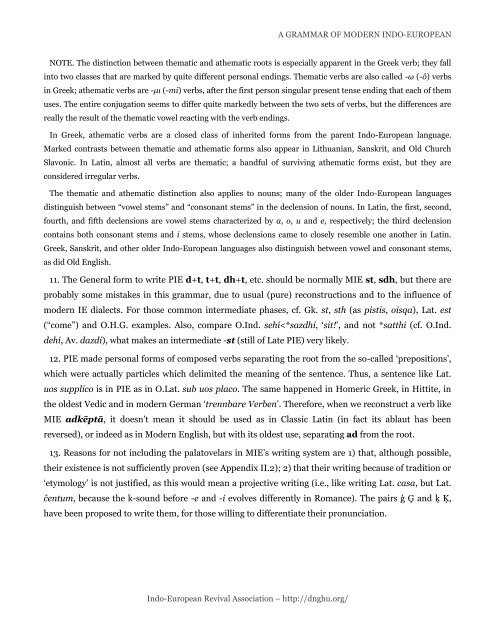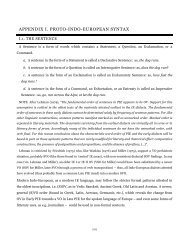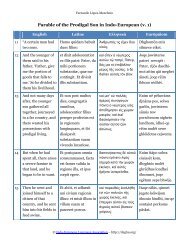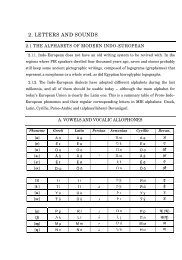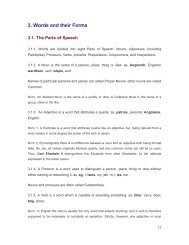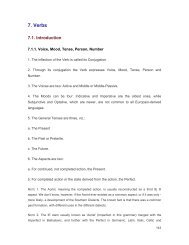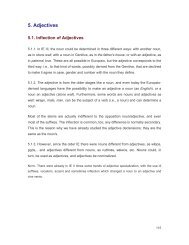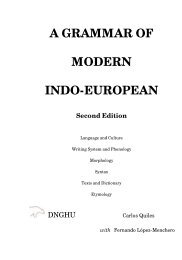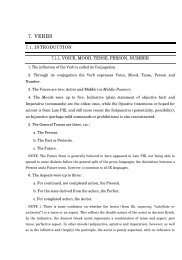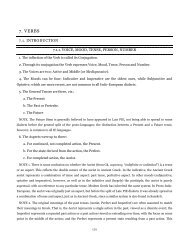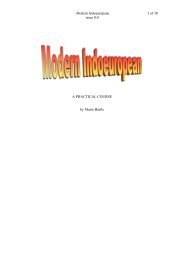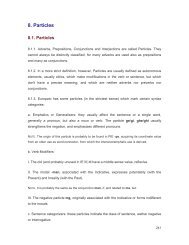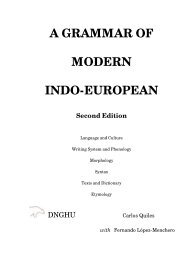Create successful ePaper yourself
Turn your PDF publications into a flip-book with our unique Google optimized e-Paper software.
Indo-European Revival Association – http://dnghu.org/<br />
A <strong>GRAMMAR</strong> <strong>OF</strong> <strong>MODERN</strong> <strong>INDO</strong>-<strong>EUROPEAN</strong><br />
NOTE. The distinction between thematic and athematic roots is especially apparent in the Greek verb; they fall<br />
into two classes that are marked by quite different personal endings. Thematic verbs are also called -σ (-ô) verbs<br />
in Greek; athematic verbs are -κη (-mi) verbs, after the first person singular present tense ending that each of them<br />
uses. The entire conjugation seems to differ quite markedly between the two sets of verbs, but the differences are<br />
really the result of the thematic vowel reacting with the verb endings.<br />
In Greek, athematic verbs are a closed class of inherited forms from the parent Indo-European language.<br />
Marked contrasts between thematic and athematic forms also appear in Lithuanian, Sanskrit, and Old Church<br />
Slavonic. In Latin, almost all verbs are thematic; a handful of surviving athematic forms exist, but they are<br />
considered irregular verbs.<br />
The thematic and athematic distinction also applies to nouns; many of the older Indo-European languages<br />
distinguish between ―vowel stems‖ and ―consonant stems‖ in the declension of nouns. In Latin, the first, second,<br />
fourth, and fifth declensions are vowel stems characterized by a, o, u and e, respectively; the third declension<br />
contains both consonant stems and i stems, whose declensions came to closely resemble one another in Latin.<br />
Greek, Sanskrit, and other older Indo-European languages also distinguish between vowel and consonant stems,<br />
as did Old English.<br />
11. The General form to write PIE d+t, t+t, dh+t, etc. should be normally MIE st, sdh, but there are<br />
probably some mistakes in this grammar, due to usual (pure) reconstructions and to the influence of<br />
modern IE dialects. For those common intermediate phases, cf. Gk. st, sth (as pistis, oisqa), Lat. est<br />
(―come‖) and O.H.G. examples. Also, compare O.Ind. sehí


